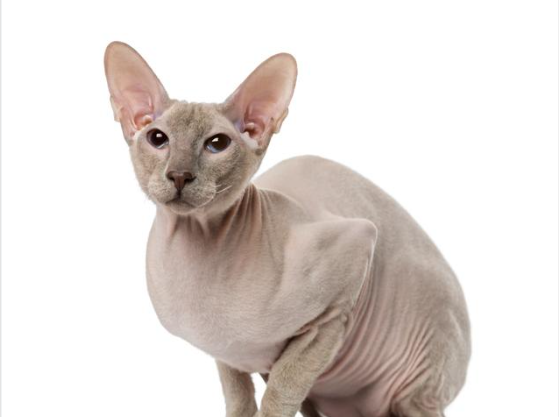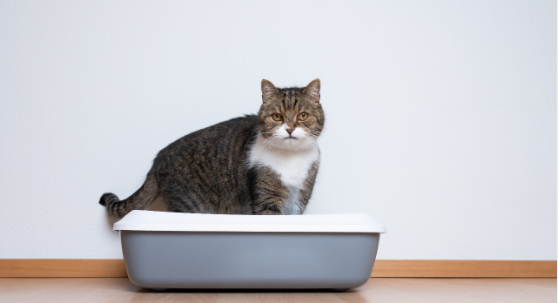Least Adopted Cat Breeds?
The Definition of Least Adopted Cat
The term “least adopted cat” refers to a breed or type of cat that has significantly lower adoption rates compared to other breeds. These cats often spend a long time in animal shelters or rescues, waiting for their forever homes.
Unfortunately, some of these cats may never find homes and can face euthanasia due to overcrowding in shelters. There are various reasons why certain cats may be less popular among adopters.
It could be due to their appearance, temperament, or specific needs that require more attention and care. Understanding which breeds fall under the category of least adopted cats is essential in addressing the issue and finding ways to increase adoption rates.
The Importance of Discussing Least Adopted Cat
Discussing least adopted cats is crucial because it sheds light on a significant issue in animal welfare. Every year, millions of cats end up in animal shelters or rescue across the US, and many of them never make it out alive.
By focusing on the least adopted cat breeds, we can create awareness about their unique qualities and needs while also finding ways to increase their chances of getting adopted. Moreover, discussing the least adopted cats can help break stereotypes and misconceptions surrounding certain breeds.
Some people may believe that certain breeds are not suitable for families or have negative personality traits because they are not well-known or popular. However, most cats have similar needs for love, care, and companionship regardless of breed or appearance.
The discussion on least adopted cat breeds is an essential aspect of animal welfare advocacy that requires our attention and action. Through education and collaboration with animal shelters and rescues, we can ensure that every cat has a chance at finding a loving home.
Overview of Cat Adoption
Cats are among the most popular pets in the United States, with an estimated 94 million cats living in households across the country. However, despite their popularity, there is still a significant number of cats that are homeless and in need of adoption. According to the American Society for the Prevention of Cruelty to Animals (ASPCA), approximately 3.2 million cats enter animal shelters every year in the US, and about 1.6 million are adopted.
Statistics on Cat Adoption in the US
While cat adoption rates have been steadily increasing over the past decade, there are still many cats that remain unadopted. In fact, according to ASPCA’s National Rehoming Survey, one of the main reasons why people relinquish their cats is because they cannot find a suitable home for them.
The survey also found that only about half of all cats brought to animal shelters end up being adopted. In terms of demographics, statistics show that women are more likely to adopt cats than men.
Additionally, younger people tend to be more inclined towards adopting pets than older individuals; however, older people tend to be more reliable long-term cat owners. Furthermore, families with children are also more likely to adopt a cat as compared to those without children.
Factors That Influence Cat Adoption
There are several factors that can influence a person’s decision when it comes to adopting a cat. Some of these factors include breed preferences, age and temperament of the cat, lifestyle compatibility with the pet owner’s lifestyle, and personality traits such as activity level or sociability.
Other factors include accessibility and location – the proximity of animal shelters or rescues offering adoptions may encourage or discourage potential pet owners from adopting based on convenience or lack thereof; financial considerations such as cost associated with medical care may also play a role in one’s decision-making process. Some people may prefer to adopt cats for reasons such as environmental sustainability or the suitability of the cat for their living situation (such as an apartment).
The Least Adopted Cat Breeds
When it comes to cat breeds, some are more popular than others. While some cats seem to be adopted almost as soon as they arrive at an animal shelter, there are others that have a much harder time finding their forever homes.
These last adopted cat breeds often have unique characteristics that appeal to only a select group of people. Here are three examples:
Sphynx
The Sphynx is probably one of the most well-known of the “hairless” cat breeds. While these cats do have a fine layer of hair on their bodies, it is so thin and short that they appear to be completely hairless.
The Sphynx is known for being affectionate and social, but their unique appearance can make them difficult to place in homes. One reason why Sphynx cats may be less popular among adopters is due to concerns over their care needs.
Without fur, these cats require regular baths to keep their skin healthy and free from oils and dirt. Additionally, they may need extra warmth during colder months due to their lack of insulation from fur.
Singapura
The Singapura is one of the smallest cat breeds in existence, with adult cats weighing in at just four to eight pounds. Despite their diminutive size, these cats are known for being incredibly active and playful.
They also tend to form strong bonds with their owners. So why aren’t Singapuras adopted more frequently?
One reason could be due to a lack of awareness: many people simply haven’t heard of this breed before. Additionally, because they’re small and energetic, they may not be ideal for households with very young children or other pets.
Peterbald
This breed is another hairless cat variety, originally bred in Russia. Like the Sphynx, the Peterbald has very little fur on its body and may require special care to keep its skin healthy. These cats are known for being intelligent and affectionate.
One challenge in placing Peterbalds in homes is due to their relative rarity: they’re simply not as well-known or widely available as more common breeds like Siamese or Persians. Additionally, because they have less insulation than other cats, they may require extra warmth during colder months.
The Impact of Low Adoption Rates on Cats
Effects on the cats themselves
The impact of low adoption rates on cats can be devastating. Cats that remain in shelters for a long time can experience significant physical and emotional problems. Firstly, they are at risk of developing illnesses due to prolonged exposure to other animals in the shelter, which could result in a weakened immune system.
Additionally, they may also suffer from depression and anxiety due to the stressful environment of the shelter. Furthermore, cats that remain unadopted for extended periods face an increased risk of euthanasia.
Some shelters may have limited space or resources, leading them to prioritize adoptable cats over those that have been waiting for long periods. This means that even healthy and well-behaved cats may end up being euthanized simply because they were not adopted quickly enough.
Effects on Animal shelters and Rescues
Low adoption rates also present significant challenges for animal shelters and rescues. Firstly, it puts a strain on resources as more animals are housed for longer periods. The cost of caring for these animals increases significantly over time, especially if medical treatment is required.
Additionally, low adoption rates place additional stress on staff as they work tirelessly to provide care and attention to all the animals under their care while managing limited resources effectively. Moreover, increasing numbers of unadopted cats lead to overcrowding in animal shelters which can magnify some health issues such as respiratory infections or parasite prevalence among other feline residents.
Low adoption rates cause significant problems not only for individual cats but also for animal shelters and rescues trying their best to care for them. It’s vital that we take steps towards increasing cat adoptions by educating people about low-adopted cat breeds’ unique features while promoting responsible pet ownership practices at large-scale levels making adoptions more accessible to everyone who wants a furry friend.
Ways to Increase Adoption Rates for Least Adopted Cats
Education and Awareness Campaigns about These Breeds
One of the most effective ways to increase the adoption rates of least adopted cats is through education and awareness campaigns. These campaigns can be aimed at potential adopters, as well as at animal shelters and rescues. Potential adopters may not be aware of the unique personalities and characteristics of these breeds or may have misconceptions due to breed stereotypes.
By providing accurate information about the breeds, their traits, and their care requirements, potential adopters can make informed decisions about whether a particular least adopted cat is a good fit for their home. Animal shelters and rescues can also benefit from education and awareness campaigns.
By providing training on how to care for these breeds, as well as how to promote them to potential adopters, shelter staff can become better equipped to handle the needs of these cats. Additionally, by partnering with local veterinarians or breed-specific rescue organizations, shelters can provide specialized care that may not be available otherwise.
Working with Animal Shelters and Rescues to Promote These Cats
Another effective way to increase adoption rates for least adopted cats is by working with animal shelters and rescues. Many shelters have limited resources when it comes to promoting individual cats or specific breeds. However, by partnering with local businesses or community organizations, they can expand their reach beyond their immediate area.
Rescues that specialize in specific breeds can also play an important role in increasing adoption rates for least adopted cats. They often have deep knowledge about the breed’s unique characteristics and may be able to offer resources such as training or behavioral support that are not available through traditional animal shelters.
Encouraging Responsible Pet Ownership
One of the most important ways to increase adoption rates for least adopted cats is by encouraging responsible pet ownership. This can include educating potential adopters about the costs associated with cat ownership, as well as the time and attention required to properly care for a cat.
Additionally, encouraging spaying or neutering can help to reduce overpopulation and prevent unwanted litters. Promoting positive training techniques and emphasizing the importance of regular veterinary care can help to ensure that cats remain happy and healthy in their new homes.
By using a combination of education, partnership with shelters and rescues, and promotion of responsible pet ownership, the adoption rates for least adopted cats can be increased. These efforts not only benefit individual cats but also contribute to reducing overpopulation and improving animal welfare overall.
Conclusion
It is clear that the issue of least adopted cat breeds is an important one that requires attention. Our society has a responsibility to ensure that all cats, regardless of breed, have access to loving homes and proper care.
In this article, we have examined the factors that contribute to low adoption rates for certain cat breeds and the impact this has on both the cats themselves and animal shelters. Through education and awareness campaigns, working with animal shelters and rescues, and encouraging responsible pet ownership, we can take steps toward increasing adoption rates for these breeds.
It is important for potential adopters to realize that there are many benefits to adopting a least-adopted cat breed. These cats may be more unique in appearance or possess unique personalities due to their distinct traits.
It is our hope that this article has shed light on the issue of least adopted cat breeds and inspired readers to consider adopting one of these wonderful felines into their homes. Together we can make a difference in the lives of these cats by providing them with a loving forever home.




